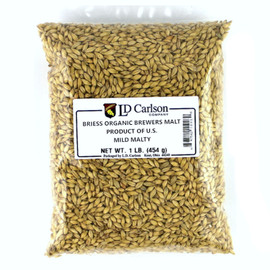Briess 2-Row Brewers Malt 50 lb
Brand : Briess
- SKU:
- 1928C
- UPC:
- 68582605298
- Shipping:
- Calculated at Checkout
Briess 2-Row Brewers Malt is the perfect choice for any beer-making enthusiast. This malt is made from two-row barley, which is known for its superior flavor and aroma. It is kilned to a light color, giving it a mild, sweet flavor that is perfect for any beer style. This malt is highly versatile and can be used in a variety of beer styles, from light lagers to dark ales. It is also a great choice for adding body and flavor to any beer. With its light color and mild flavor, Briess 2-Row Brewers Malt is sure to be a favorite among beer-makers.
Briess 2-Row Brewers Malt 50 lb is the traditional base for pale ale, bitter, and a main ingredient of most British malt beers. It is dried at a very low temperature to keep its light color and to preserve the malted sugars. Briess 2-Row Brewers Malt 1 lb is a great base malt for many types of beers; pale ale, IPA. English pale malts are kilned at 95-105 °C, with a color ASBC 2-3/EBC 5-7 and diastatic power (DP) 45 °Lintner.
















